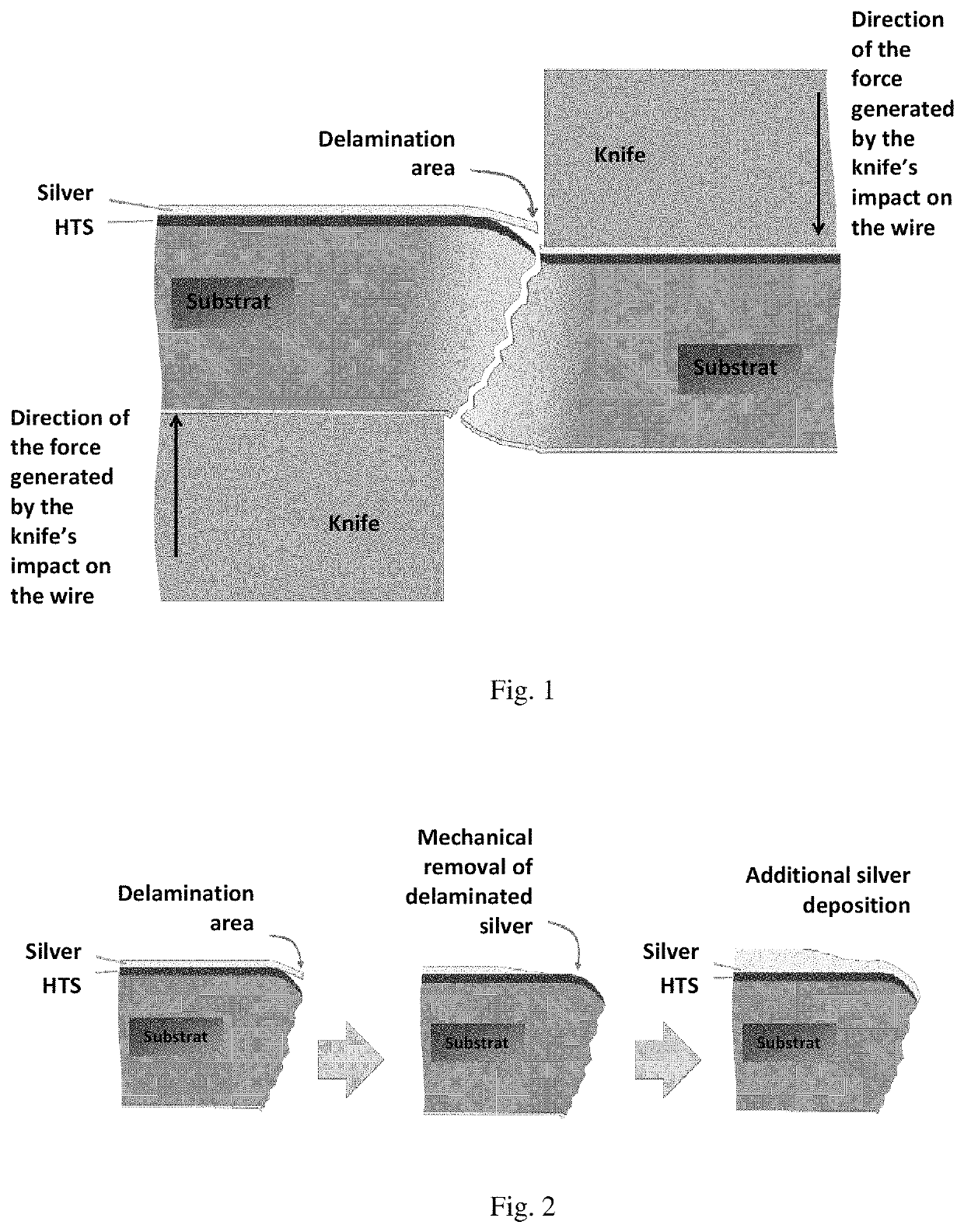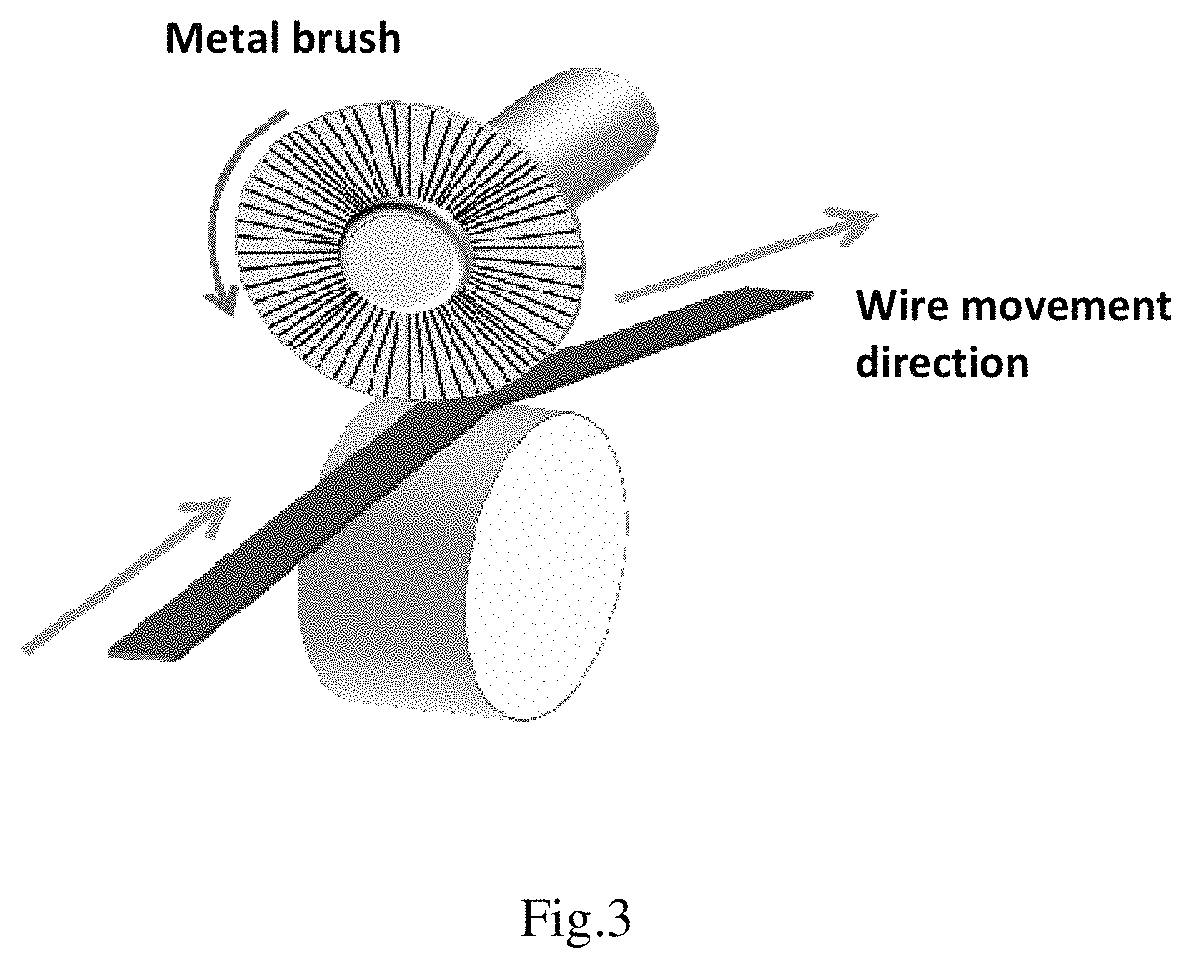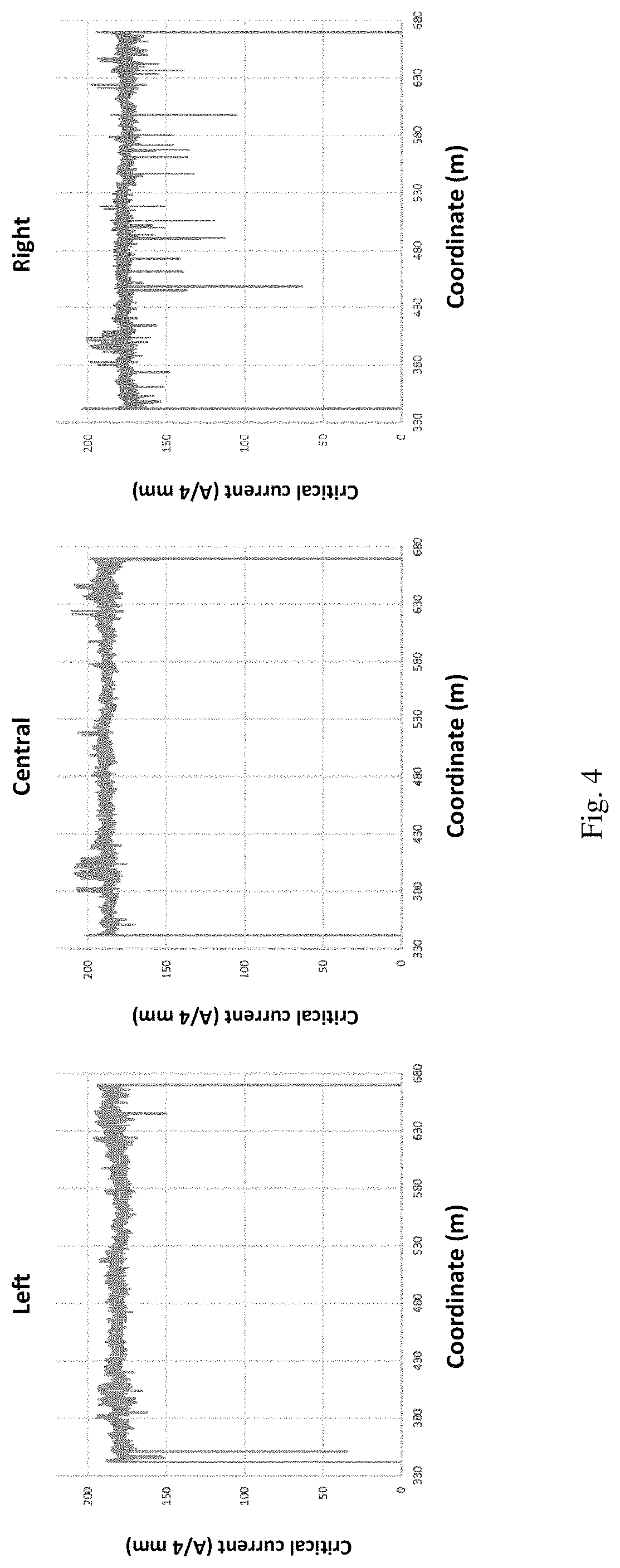Method of fabricating second-generation high-temperature superconducting wires
a superconducting wire and high-temperature technology, applied in the direction of superconductors/hyperconductors, superconductor devices, electrical apparatus, etc., can solve the problems of ensuring the loss of 20 percent of the source wire, deteriorating the current carrying properties, and unfit wires for any further use, so as to ensure the predictability and stability of the properties
- Summary
- Abstract
- Description
- Claims
- Application Information
AI Technical Summary
Benefits of technology
Problems solved by technology
Method used
Image
Examples
Embodiment Construction
[0035]The distinctive feature of the claimed method is the step consisting in the removal of delaminated fragments, performed in the claimed method after the slitting of the intermediate product into low-width wires and prior to the application of an additional protective layer.
[0036]It has been established that if delaminated fragments are not removed, the additional protective layer will not be functional, and delamination will occur at the subsequent stages of the production process of fabricating the HTS wire, as well as because of the HTS wire thermal cycling during its operation. In all cases, the presence of delaminated fragments resulted in deterioration of the current carrying properties of the wire.
[0037]In the method we claim, all delaminated sections are removed first, and additional layers of silver or a combination of silver and copper are deposited thereafter. As a result, the structure of the wire becomes resistant to the potential damage during further production st...
PUM
| Property | Measurement | Unit |
|---|---|---|
| width | aaaaa | aaaaa |
| width | aaaaa | aaaaa |
| temperature superconducting | aaaaa | aaaaa |
Abstract
Description
Claims
Application Information
 Login to View More
Login to View More - R&D
- Intellectual Property
- Life Sciences
- Materials
- Tech Scout
- Unparalleled Data Quality
- Higher Quality Content
- 60% Fewer Hallucinations
Browse by: Latest US Patents, China's latest patents, Technical Efficacy Thesaurus, Application Domain, Technology Topic, Popular Technical Reports.
© 2025 PatSnap. All rights reserved.Legal|Privacy policy|Modern Slavery Act Transparency Statement|Sitemap|About US| Contact US: help@patsnap.com



